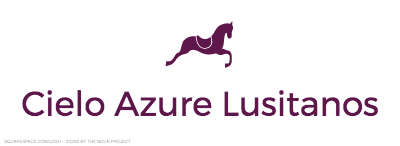“Arte de Marialva”: one of the true treasures of Portugal
The Age of Enlightenment, also known as the Age of Reason, was an intellectual and philosophical movement, which dominated the world of ideas in Europe during the 18th century. During this period, the book “Lightness in the Liberal and Noble Art of Cavalry” was cotified into text by Manuel Carlos Andrade for the Marquis von Marialva. This book has guided the Portuguese Equestrian School of Arts to this day.
Dom Pedro José de Alcântara de Menezes (1713-1799) who was better known as Marquis von Marialva was the chief Equestrian trainer of King José I of Portugal. Thus, he was in charge of the Royal Riding School in Belem and head of the Alter Real stud farm. Marialva was an extraordinary rider and trainer. Marialva’s work and philosophy in riding are preserved in the book “Luz da Liberal e Nobre Arte de Cavallaria,” written by his student Manuel Carlos Andrade. Marialva’s objective in training was to achieve lightness. The riding and teaching at the Portuguese School of Equestrian Art derives upon Marialva’s work and this book formalizes those objectives. This is why the art of horsemanship in Portugal is called “Arte de Marialva” and the great riders are called "Marialvas."
Queen Maria I of Portugal reinvents the Arte of the Bull fight
Marialva also established a set of written rules relating to bullfighting on horseback (Rejoneo). The rules prescribed by Marialva involve a code of conduct and honor given to the bull. These rules guide the bullfight in Portugal still.
The irony is that the art was almost lost because of a horrific accident involved Marialva’s son. In the summer of 1762, King Joseph I was at his country palace near Salvaterra do Magos. A royal contest was scheduled where the young son of Marguis of Marialva, named the Count of Arcos would fight before the court for the first time.
On this day, Arcos was in the ring with a huge black bull that refused to charge. Arcos did all he could to get the bull to move. Finally, in desperation, the young count rode his mount too close to the bull. The bull then lunged forward, knocking over the horse and pinning the count underneath. The bull gored Arcos to death while the king, the crowd and Marialva watched in horror.
At this point, the Marquis of Marialva jumped into the arena and fought the bull on foot. He killed the bull before falling to his knees at the body of his lifeless son, which was still pinned under his mount. Bullfighting in Portugal was banned from that day forward.
After the famous death of the son of Master Marialva, at what is now called " The Last Bullfight in Salvaterra ", King Joseph's Counselor, the Marquis of Pombal, convinced the King to put an end to the royal bullfights. He immediately ordered the demolition of the Famous Arena called Campo Santanna in Lisbon. It was not until years later, with the Death of King Joseph, that his Daughter Dona Maria, upon becoming Queen Maria I of Portugal re-instituted the Royal Art of Bullfighting in the 1830s.
When bull fighting once again became legal, the Queen ordered new rules that the bull's horns were to be padded, and the life of the animal spared - in deference to the Count of Arcos. The fine silk jackets, three-cornered hats, and riding pants worn by Portuguese cavaliers today also honor the life of that young man who died in Salvaterra. This royal proclamation which spared the life of the bull, also created the "Portuguese Corrida de Touros," and is the genesis of Portuguese bullfight today. These rules also contributed to the foundation of the "Casa da Guarda" or the House of Guardians later called the Forcados or Bull Grabbers.
It is believed that it is through the training of the Lusitano for the bull fight, which is based on the Arte de Marialva that keeps the Lusitano honed as an athlete. The Arte de Marialva is passed down through the generations, pairing Lusitano and rider in perfect harmony at the Portuguese School of Equestrian Arts. It is by using the performance of the bull fight, combined with the equestrian arts that often drives key breeding decisions. These are the guiding principles in preserving the Lusitano through the ages.
To be a Marialva is to be like no other rider in the world. They are the treasures of Portugal and the world.






